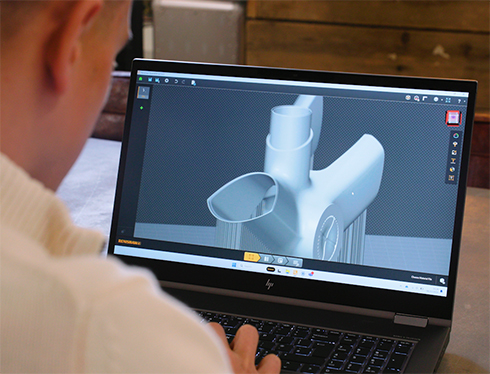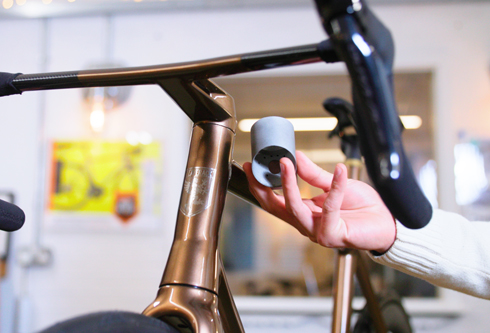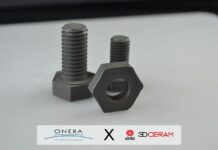There’s no debating the capabilities of additive manufacturing (AM) when it comes to producing bike components. Yet, few bike manufacturers embrace the technology as a go-to solution for crafting high-end, bespoke bicycles. UK-based J.Laverack Bicycles is one of the rare exceptions—leveraging AM to produce titanium lugs and components that elevate both performance and design.
The parts manufactured on a Renishaw‘s RenAM 500Q metal additive manufacturing (AM) system pair to corresponding carbon fibre parts to create a first-of-its-kind road bike, the J.Laverack Aston Martin .1R.
“Our relationship with Aston Martin started when a member of the design team became a customer of ours,” said David Clow, Co-Founder of J.Laverack. “Because he used the bike to commute, it caught the eye of other Aston Martin team members and planted the seed for a collaboration between the two companies, and we set out to design a high-end, luxury bespoke bike together.”
In a luxury bespoke bike, aesthetics are highly important. The aim was to make a visually ‘boltless’ bicycle from a combination of titanium lugs and carbon fibre tubes, where nearly every element can be tailored to the exact measurements of the rider, from made-to-measure handlebars to unique frame sizes. This defies traditional bike design, allowing for components to be adjusted for different rider shapes, sizes and physical attributes.
 With limited experience in AM, J.Laverack reached out to machine manufacturer Renishaw for support in manufacturing the titanium lugs, brackets, fork dropouts, headtube, rear dropouts, seat tube lug and X-wing.
With limited experience in AM, J.Laverack reached out to machine manufacturer Renishaw for support in manufacturing the titanium lugs, brackets, fork dropouts, headtube, rear dropouts, seat tube lug and X-wing.
As a reminder, Renishaw has extensive experience with the Great Britain Cycling Team. The company’s engineers built the parts at an angle, which eliminated overhangs and allowed them to create a geometry that didn’t require internal supports. Metal additive manufacturing provided the design freedom needed to make complex geometries that would not have been possible using traditional subtractive methods, while enabling the lightweighting of components. This included internal lattice structures to reduce weight, an important factor with bike design and manufacture.
Once the design and support strategy was optimised, Renishaw began to print the components in aerospace-grade 6AI/4V titanium in 30 micron layers, then heat treated and post-processed them so they can be sent for Finite Element Analysis (FEA). The parts are produced on Renishaw’s flagship RenAM 500Q system, which features an industry leading gas flow system, precision dynamic control and software for connected digital workflows.
 For performance, keeping the weight of the bike as low as possible is important. Using AM, as opposed to more traditional frame-building approaches, meant we could remove materials from certain areas of the frame where it is not needed, helping to reduce weight from the bike. As a result, the J.Laverack Aston Martin .1R starts from just 7.5 kg.
For performance, keeping the weight of the bike as low as possible is important. Using AM, as opposed to more traditional frame-building approaches, meant we could remove materials from certain areas of the frame where it is not needed, helping to reduce weight from the bike. As a result, the J.Laverack Aston Martin .1R starts from just 7.5 kg.
Described as “the world’s first ‘boltless’ bicycle”, the .1R has no visible bolts, screws or attachments at the headset, seat clamp, calipers or bottle cage. Brake hoses are concealed within the handlebars, which is a complex part that uses the same design and manufacturing technique applied to the front splitter of a Formula One car. Each bike takes over 1,000 hours to create, including over 500 hours of CNC machine time. Every detail is meticulously engineered and designed to meet the specific needs of each individual.
Images: Renishaw. Looking for a job in the AM industry or hiring new talent? You can post job opportunities on 3D ADEPT Media for free or explore openings via our job board. Stay connected by following us on Facebook, Twitter, LinkedIn & Instagram, and subscribe to our weekly newsletter for the latest updates. Have a story to share or want to be featured in our next digital magazine issue? Send it to editor@3dadept.com !






